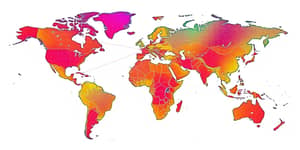Across the globe, financial services are undergoing a profound transformation. Open banking is breaking down traditional barriers, delivering unprecedented choice and convenience to consumers and businesses alike. By embracing secure, user-permissioned data sharing through standardized APIs, open banking is setting the stage for a more inclusive and innovative financial landscape.
Unleashing Financial Inclusion Worldwide
The concept of financial inclusion hinges on the ability to access core banking services without friction. In many regions, millions of underserved or unbanked individuals struggle to navigate rigid systems. Open banking addresses this challenge head-on by offering a platform for new entrants—digital banks, fintech innovators, and community organizations—to deliver tailored services.
Imagine a small entrepreneur in a remote village, able to apply for a microloan instantly through a smartphone app that aggregates their financial history. Or a single parent crafting a personalized budget with real-time spending insights. These are not distant dreams, but tangible possibilities fueled by open banking’s ecosystem.
The Mechanics Behind Open Banking
At its core, open banking relies on three pillars: user consent, standardized APIs, and dynamic data access. It empowers individuals to choose which institutions can view or utilize their financial data, ensuring transparency and control at every step.
- Consent-based access to banking, transaction, and financial records
- Real-time connectivity through well-documented APIs
- Use of tokenization and encryption for robust security
- Interoperability across banks, fintechs, and third-party providers
These components work in harmony to enable real-time, bi-directional data exchange. When a consumer grants permission, their bank can securely transmit data to authorized apps, which then use insights to offer payment initiation, budgeting tools, or credit assessments—all without exposing passwords or sensitive credentials.
Market Growth and Institutional Adoption
The momentum behind open banking is striking. The global market value is projected to climb from $30.89 billion in 2024 to $38.86 billion in 2025, reflecting a compound annual growth rate of 24.8%. By 2029, industry analysts anticipate the market to exceed $94 billion in value. These figures underscore a rapidly maturing ecosystem where banks and technology providers collaborate rather than compete.
Institutional buy-in has been equally impressive. As of early 2025, 87% of tier-1 banks worldwide offer open banking capabilities. In the United States, nearly 60% of regional banks and credit unions have adopted open APIs—a growth of 31% year-over-year among community institutions. European neobanks like N26 and Revolut made integration a standard, while Asian giants such as DBS and ICICI now provide over twenty open APIs each. In Brazil, more than 80% of banks deliver Payment Initiation Service Provider (PISP) functions under open finance frameworks.
Real-World Benefits for Consumers and Businesses
Consumers have become the primary beneficiaries of open banking’s democratizing power. Armed with comprehensive insights into their finances, they can:
- Send and receive money with ease (72% of users employ this feature)
- Pay bills automatically and on time (66% usage rate)
- Aggregate multiple accounts in a single dashboard (66% usage rate)
These conveniences translate into genuine time savings and reduced stress, as manual data entry gives way to automated workflows. Users feel more confident, knowing that they retain control through granular consent settings and can revoke access at any time.
For banks and fintechs, open banking delivers profound operational benefits. By replacing manual processes with streamlined operations and automated processes, financial institutions reduce reconciliation times, accelerate payment settlements, and optimize cash flow management. The availability of real-time data supports data-driven decision-making and personalization—from precise credit scoring to tailored lending offers and predictive budgeting tools.
Regional Dynamics and Regulatory Landscapes
The regulatory environment plays a pivotal role in shaping open banking adoption. In the UK and Europe, directives like PSD2 have mandated data-sharing standards, propelling consumer uptake despite limited brand awareness—only 22% of UK consumers recognize the term “open banking,” even as usage surges. Asia-Pacific markets boast the highest projected growth rates, with local regulators promoting unified frameworks to spur innovation. In North America, leading banks such as JPMorgan Chase and Wells Fargo have launched developer portals to encourage fintech collaboration, though regulatory harmonization remains a work in progress.
Emerging markets in Latin America and Africa see open banking as a lifeline for underbanked populations. Governments and central banks increasingly view open APIs as tools for financial inclusion, incentivizing partnerships with microfinance institutions and technology firms to roll out services in rural and low-income communities.
Challenges and the Road Ahead
Despite remarkable progress, open banking faces hurdles. Structural gaps, particularly in the United States, highlight the need for cohesive regulatory frameworks. Consumer education remains vital; many users reap the benefits without fully understanding the ecosystem that powers their favorite apps.
Security and privacy, while significantly enhanced through tokenization and consent models, demand continual vigilance. As data flows multiply, robust governance and regular audits become essential to maintain trust.
Looking ahead, collaboration between regulators, incumbents, and innovators will be crucial. Standardized API protocols, open-source tooling, and international interoperability could accelerate development, enabling financial services to transcend borders and deliver value wherever there is internet connectivity.
Embracing a Data-Driven Future
Open banking represents more than a technological shift—it embodies a philosophical commitment to transparency, empowerment, and inclusion. By putting consumers at the center of the financial ecosystem, open banking transforms banks from gatekeepers into platforms that foster creativity and choice.
Every data flow, every API call, and every permission granted brings us closer to a world where financial services are accessible to all, simple to use, and tailored to individual needs. Already, 13.3 million users in the UK and small businesses rely on open banking platforms, fueling a 40–50% year-over-year growth in adoption. Businesses enjoy a 29% reduction in onboarding time and over 70% of institutions report improved customer retention.
Now is the moment to embrace open banking’s promise. Whether you are an entrepreneur seeking capital, a family budgeting for the future, or a developer designing the next great fintech solution, open banking offers the tools to build a more inclusive and dynamic financial world. Join the thousands of developers and financial leaders forging solutions that span lending, payments, identity verification, and beyond. The journey has only just begun, and the possibilities are boundless.
References
- https://stripe.com/resources/more/open-banking-explained
- https://openbanking.foleon.com/live-publications/the-obl-impactreport-7/adoption-analysis
- https://www.mx.com/blog/what-is-open-banking/
- https://coinlaw.io/open-banking-adoption-statistics/
- https://plaid.com/resources/banking/what-is-open-banking/
- https://www.fortunebusinessinsights.com/open-banking-market-112359
- https://www.digitalapi.ai/blogs/open-banking-trends
- https://www.openbanking.org.uk/insights/obl-impact-report-7-open-banking-delivers-real-world-impact-as-adoption-accelerates-year-on-year/










